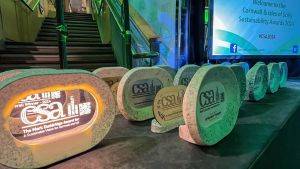Harvesting reed for pulp and paper production at Wuliangsuhai Lake, Inner Mongolia
Introduction
Common reed (Phragmites australis) is an abundant wetland plant in the eutrophic Wuliangsuhai Lake. Commercial harvesting provides a removal of nutrients and reduces the accumulation of Gyttja within the lake. Therefor reed harvesting maintains an important wetland area.
Description
Situated north of the Yellow River and south of the Gobi desert, the 300 km2 Wuliangsuhai Lake serves as a significant water source, providing many important ecosystem services for the arid region. As a terminal lake of the Hetao irrigation area it is mainly fed by drainage water from agriculture fields. This drainage water brings with it high levels of fertilizer, pesticides and organic particles, which result in enhanced growth of emergent and submerged vegetation. Next to Typha latifolia, the lake is dominated by common reed, which covers half of the water. The “open” water area is mostly covered by Potamogeton pectinatus. The accumulation of organic sediments on the bottom of the lake causes the water, which is on average only 1 m deep, to rise by 7-13 mm every year and in the last 20 years a gyttja layer of about 12 cm has accumulated. At Wuliangsuhai Lake the reed harvesting annual removes 105 tons of phosphate and 417 tons of nitrogen by winter reed cutting (1995- 2010). These correspond to 14% and 13% respectively of the total phosphate and nitrogen influx.
Site Activity
Harvesting emergent plants can slow down the silting rate and help to prevent the lake changing into a marshland. In addition, with an annual harvest of 100,000 tonnes of reed, reed selling contributes significantly to local livelihoods. The majority of the reed is sold to paper factories to be made into paper pulp, which provides a significant financial benefit to the lake administration. Minor parts of reed are also used in the production of mats for covering greenhouses. The utilisation of reed has a long tradition in China. For centuries, it has been used as a fodder plant, for building material and as a source of energy. In 2004, about 1 million hectares of reed beds delivered an annual yield of 2.6 Million tonnes. 95% of this harvested reed was used for pulp and paper production - about 10% of the total non-wood pulp and paper production in China. China offers an example of how to use wetland resources for multiple purposes and how wetland plants can be used in a sustainable manner. As well as offering alternative ways to meet the growing demand for biomass and substitutes for fossil fuels, these examples of reed utilisation demonstrate the positive impacts of harvesting on eutrophic water bodies.
Project Name: Harvesting reed for pulp and paper production at Wuliangsuhai Lake, Inner Mongolia
Organisation / Lead partner: Wuliangsuhai Industry Development Cooperation Ltd
Predominately: Upland










